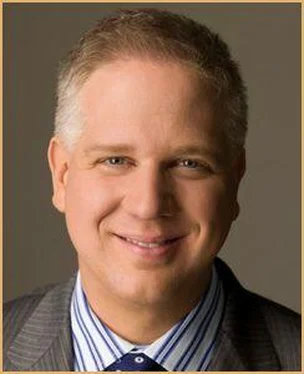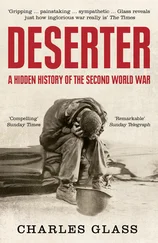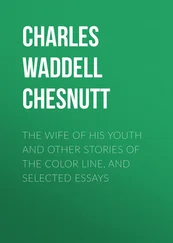Edison shoved his cigar back in his mouth, his decision made. He plopped back into his chair and spun it toward his cluttered desk.
No. It was best that Tesla leave and never return.
Great Barrington, Massachusetts
March 1886
George Westinghouse tugged the lapels of his coat until the finely woven fabric snugged properly against his broad shoulders. He licked his fingers and smoothed his expansive handlebar mustache. He was pleased with his reflection in the mirror.
A voice came from behind him. “We should alert the newspapers.”
William Stanley had invented an alternating current transformer. His outsized ambition, along with his oversized ego, made him eager to make a name for himself. A story in the newspapers would help.
“No. Alerting newspapers also alerts Edison and his backers,” Westinghouse said. “It’s better that reporters cover the story as just another electrification.” He used the fingers of both hands to fluff his mutton-chops.
“Engineers will be impressed that we are making a leap in technology,” Stanley said. “This is a major breakthrough—we both know that. We’re changing the direction of electricity, after all. What do we gain by introducing it so quietly?”
Westinghouse turned from the mirror to face Stanley directly. “Edison likes to shout about his accomplishments from the rooftops. I prefer to simply deliver on my commitments. My ambition is to provide employees an opportunity to make their lives better. That is the reason I build large companies. I pay living wages that are higher than other manufacturers, and my companies are pioneers in safety, benefits, and pensions. Personal glory is not among my concerns.”
Westinghouse saw by Stanley’s expression that he didn’t like his answer.
After a silent moment, Stanley gently took him by the elbow and guided him toward the window. There was a large crowd gathering below. “Mr. Westinghouse, this twilight will soon turn to dark, and then we’ll turn that darkness back into light. Those people think it’s magic, or nearly so.”
“Then why should we disillusion them? There is nothing wrong with magic. Besides, we’ll only incite our competitors if we crow about this evening.”
Westinghouse knew he was not nearly as famous as the flamboyant Wizard of Menlo Park. Edison had a carefully crafted image as a disheveled genius who lived off apple pie. Reporters lionized him as a selfless giant dedicated to changing the world.
Westinghouse, on the other hand, was just another Pittsburgh inventor and manufacturer. He refused interviews. He didn’t make good copy. He was dull. Sure, he was successful and rich, but his wealth came from arcane industries that received little public attention. Electricity, however, was different. Unlike trains, telegraphs, or steam engines, electricity came into the home and made everyday life easier, cleaner, and less expensive. Electric light was soft, odor-free, flicker-free, clean, cool, and soundless—all the things gaslights were not. People believed it was magic.
Electricity was becoming so popular that small companies were formed almost every day in almost every city in the nation. Most were doomed to fail, especially those run by electrical neophytes. So, on January 8, 1886, when Westinghouse incorporated his fifth business, the Westinghouse Electric Company, no one took much notice. He believed it was in his interest to keep it that way.
Tonight, they were going to illuminate the town of Great Barrington with electricity generated many miles away. This was an important milestone because the direct current used elsewhere needed to be generated within a half mile of where it was used due to heat and energy loss. This was somewhat workable in cities, but in a rambling town like Great Barrington, it meant that each business and home would need to install a private generator. Whether placed in the basement or down the block, these generators spewed coal dust, smoke, and noise.
Westinghouse’s alternating current technology made it possible for power stations to be located close to their fuel source, well outside of neighborhoods. It wasn’t hard to see the vision: Westinghouse would build large generating facilities far from population centers and then sell that electricity to the citizens of each city. It would be cleaner, quieter, safer, and far more efficient.
Westinghouse patted Stanley on the shoulder. “Now, let’s go give these fine people a magic show.”
West Orange, New Jersey
December 1887
“Here are today’s copper prices.”
The aide handed Edison the ticker tape and scurried out of his office, indicating the tape carried bad news. Up another penny! Damn the French! He threw the tape into the ash can.
A French consortium had cornered the copper market and driven the price from ten cents a pound to sixteen cents. Even for short distances, direct current required expensive, thick copper wire. He looked at the budget for his latest proposal. Every penny increase would cost him an additional three thousand dollars for copper wire on this one contract alone. He didn’t need another headache right now.
Westinghouse had come out of nowhere to invade his territory. He was making far too much headway with his alternating current schemes and now, because his method used far less copper, the increasing prices were pushing the edge even further in his favor. Edison knew that Westinghouse, through no effort of his own, was gaining an economic advantage.
Edison had fought off competitors like gnats when he’d first electrified Wall Street five years earlier. After he had emerged supreme his name became synonymous with the fastest-growing industry in the world: electrification. His businesses had grown so large so fast that he no longer knew the names of all the people he employed. Was it possible that everything could now be at risk? He had never felt fear like this before. He tried to shake it off, but the foreboding lingered.
Westinghouse’s companies were thriving and he was expanding his electrification reach almost every day. Westinghouse had concentrated on delivering power outside the large metropolitan areas, but he recently captured New Orleans, the tenth-largest city in the country. Edison’s salesmen were now writing letters to headquarters, pleading for help. Westinghouse had to be stopped.
Edison believed he understood Westinghouse because they had followed similar paths, each of them having invented a vital component for one of the two most important industries in the nation. Edison created the Quadruplex Telegraph, and Westinghouse developed air brakes for railcars. Both were fine inventions, but telegraphs and trains were no longer on the technical or financial frontier. Now Wall Street was rushing to invest in electricity, an industry Edison practically owned until Westinghouse had invaded his arena. He knew he had to do something about it.
Edison picked up a letter that had been sitting on his desk and made a decision.
• • •
Last November, Thomas Edison had received a letter from Alfred P. Southwick, a dentist who had been appointed to the Commission on Humane Executions for the state of New York. Southwick wanted Edison’s opinion about execution by electricity. Because of his opposition to capital punishment, Edison had declined to offer advice, but Southwick would not be put off. When Edison received a follow-up letter, he began to think about the question more deeply.
Electricity was, by its very nature, dangerous. New York City, for example, was a web of overhead electric lines. Dangerous lines. When they fell, pedestrians were at risk of electric shock.
When Edison entered the New York market, he had insisted on burying his electric wiring in iron pipes. Trenching had been costly and slow, but safety was of utmost importance—and his focus on it ultimately helped him to win popular support. In the end, his competitors went under, retreated to a remote corner of the electricity business, or were forced to move to an entirely different industry.
Читать дальше












